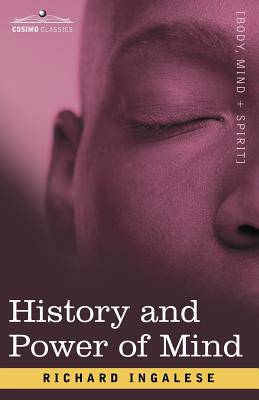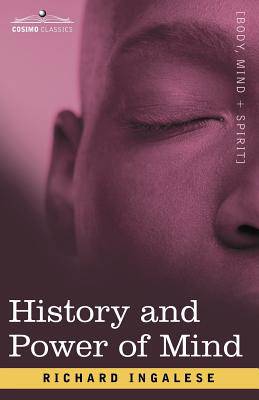
Je cadeautjes zeker op tijd in huis hebben voor de feestdagen? Kom langs in onze winkels en vind het perfecte geschenk!
- Afhalen na 1 uur in een winkel met voorraad
- Gratis thuislevering in België vanaf € 30
- Ruim aanbod met 7 miljoen producten
Je cadeautjes zeker op tijd in huis hebben voor de feestdagen? Kom langs in onze winkels en vind het perfecte geschenk!
- Afhalen na 1 uur in een winkel met voorraad
- Gratis thuislevering in België vanaf € 30
- Ruim aanbod met 7 miljoen producten
Zoeken
Omschrijving
A great student of the Science of Mind, Richard Ingalese frequently lectured on New Thought and topics of mental therapeutics. The History and Power of Mind is a collection of many of his lectures and articles, first published in 1902, with Ingalese's own annotations and expansions. Difficult subjects to wrangle, from self-control to hypnotism to self-healing, were not a problem for the articulate and charismatic Ingalese, who brings insight and intelligence to esoteric ideas and puts them in a practical and applicable context that demystifies mental and psychic phenomena for the intellectual reader curious about the mind, how it works, and what it can do. American lawyer RICHARD INGALESE (b. 1854) was a self-taught alchemist and proponent of New Thought. He claimed to have confected the true Philosopher's Stone, which confers immortality and turns common metals into gold, and disappeared, along with his wife, a psychic and healer, sometime in the early 20th century. Before their disappearance, Ingalese authored several articles and books, including Fragments of Truth (1921), Astrology and Health (1927), and Cosmogony and Evolution (1907).
Specificaties
Betrokkenen
- Auteur(s):
- Uitgeverij:
Inhoud
- Aantal bladzijden:
- 356
- Taal:
- Engels
Eigenschappen
- Productcode (EAN):
- 9781602063297
- Verschijningsdatum:
- 15/04/2007
- Uitvoering:
- Paperback
- Formaat:
- Trade paperback (VS)
- Afmetingen:
- 140 mm x 216 mm
- Gewicht:
- 449 g

Alleen bij Standaard Boekhandel
+ 67 punten op je klantenkaart van Standaard Boekhandel
Beoordelingen
We publiceren alleen reviews die voldoen aan de voorwaarden voor reviews. Bekijk onze voorwaarden voor reviews.









